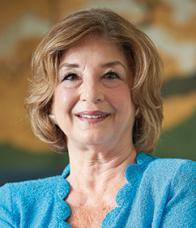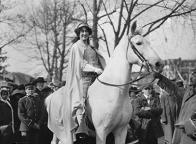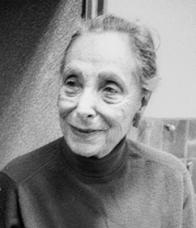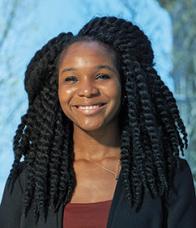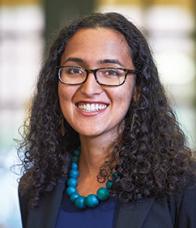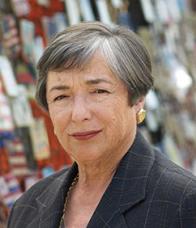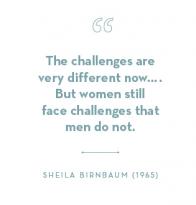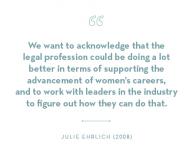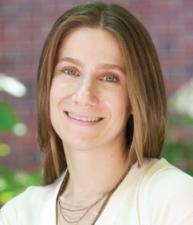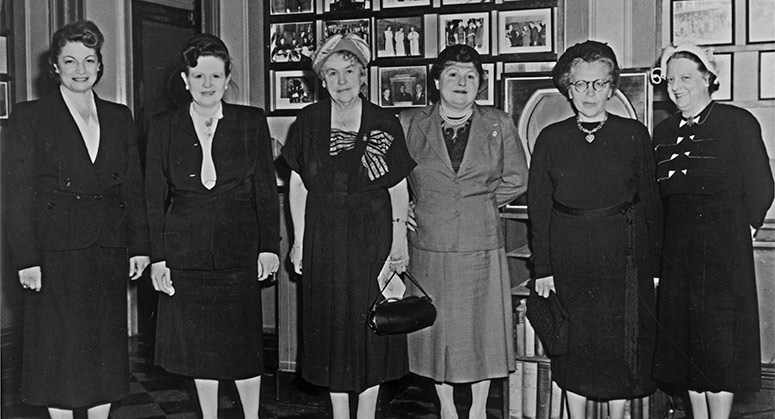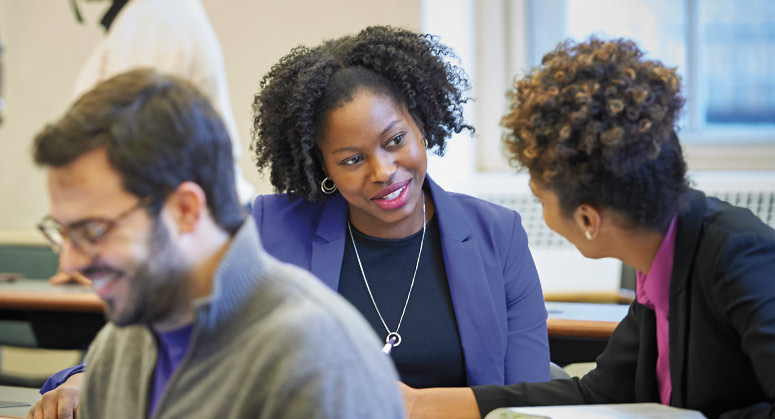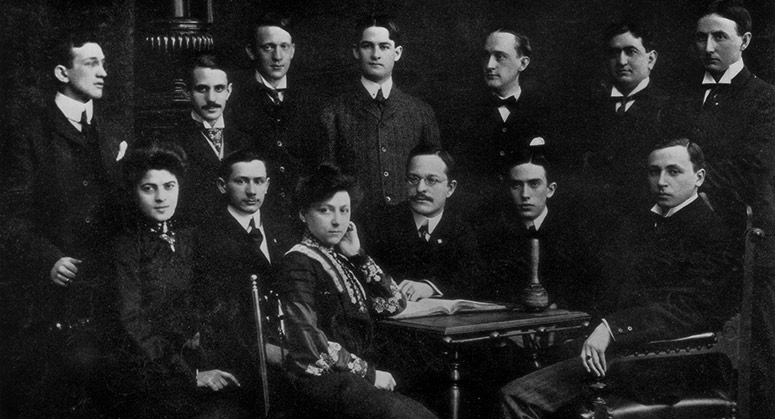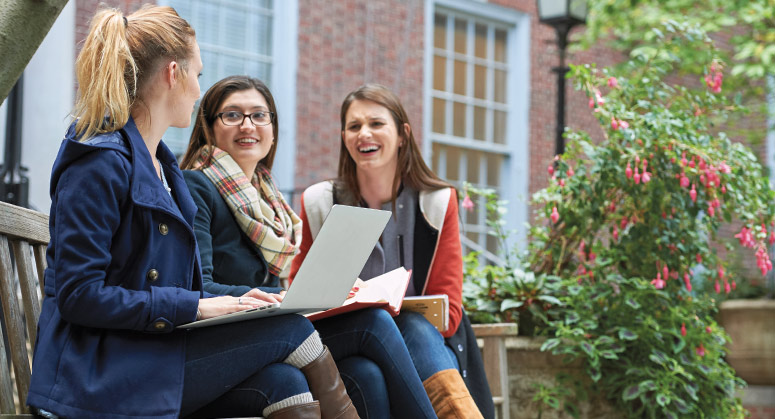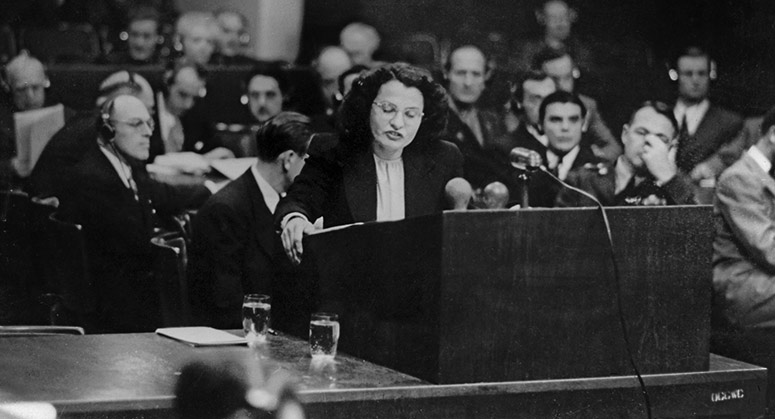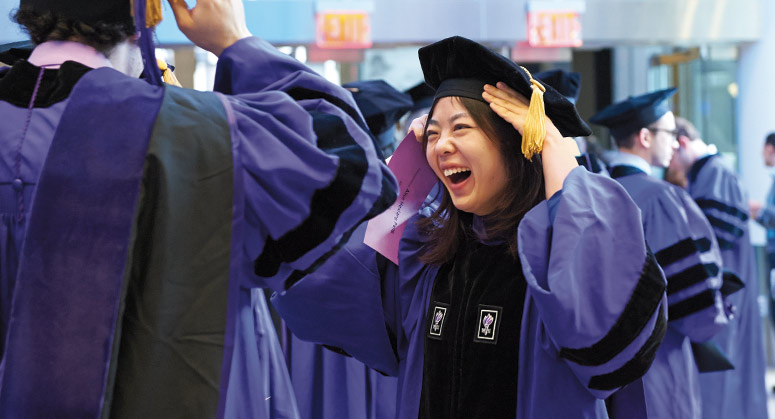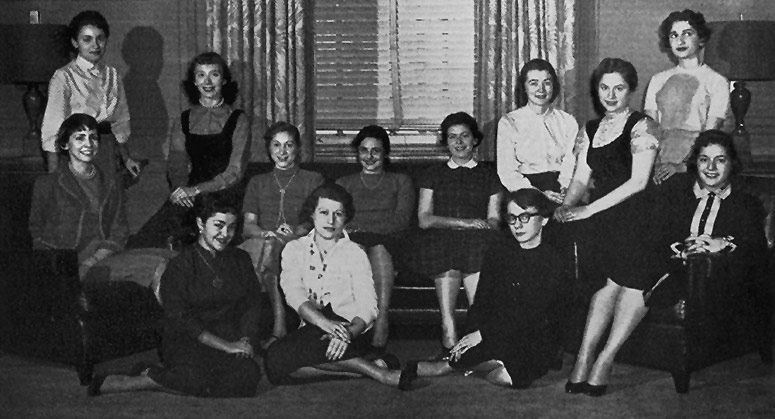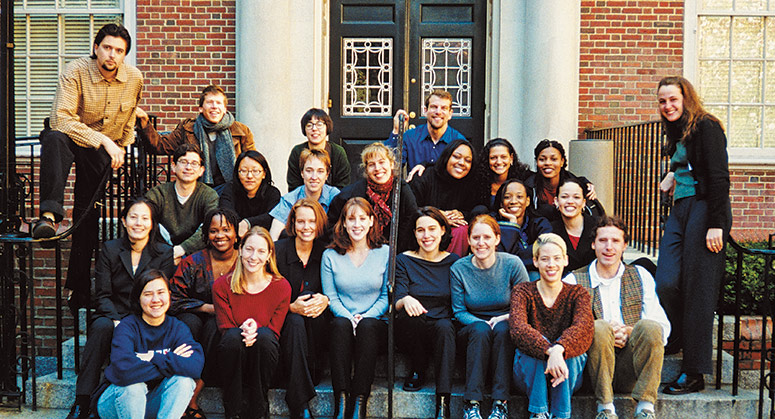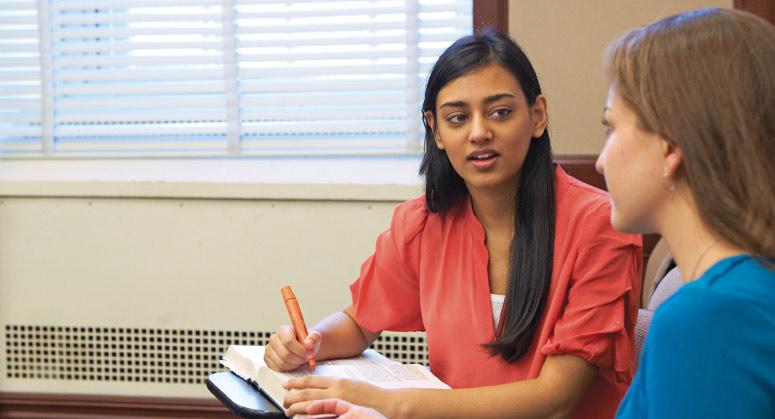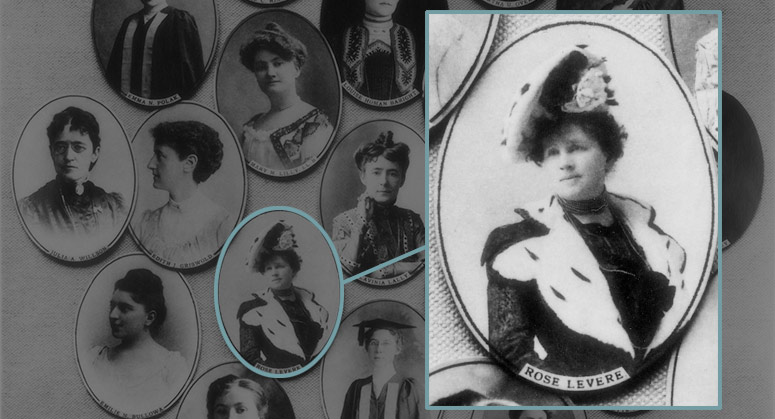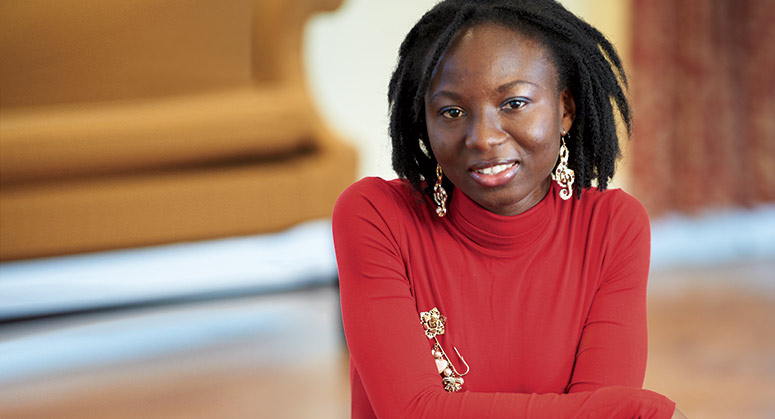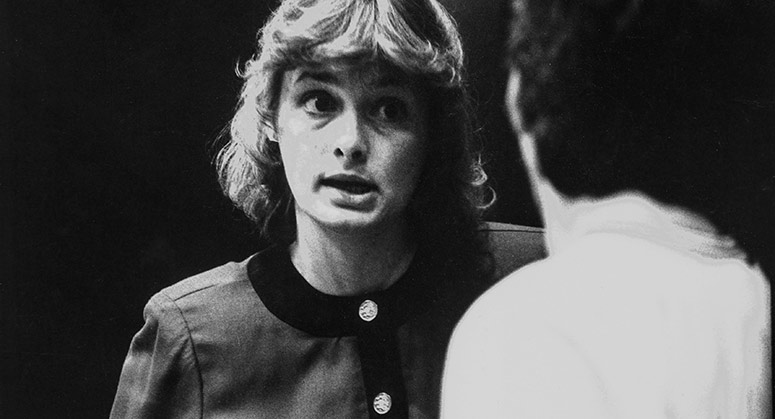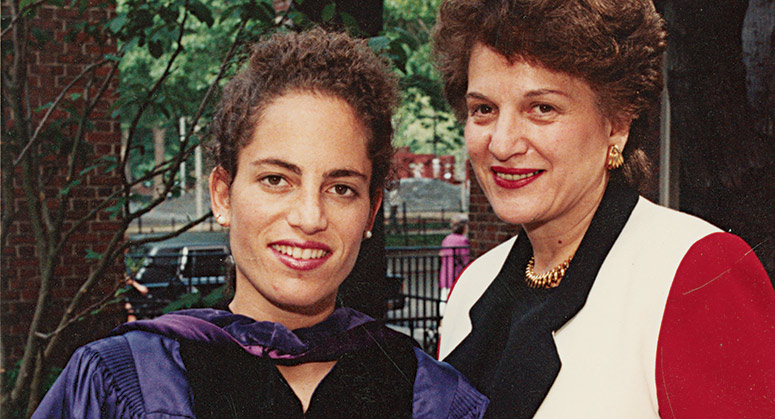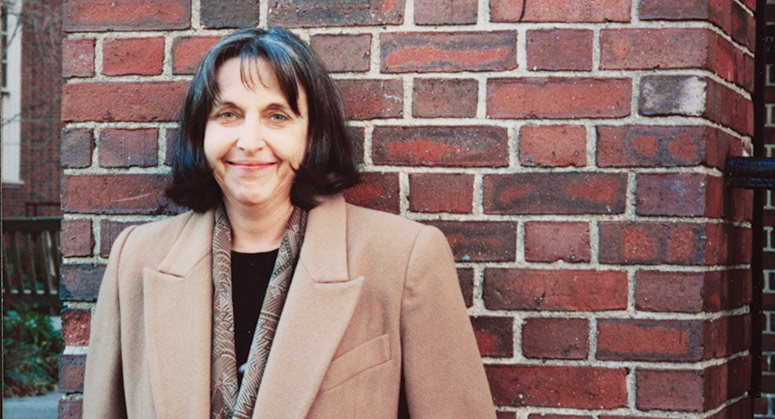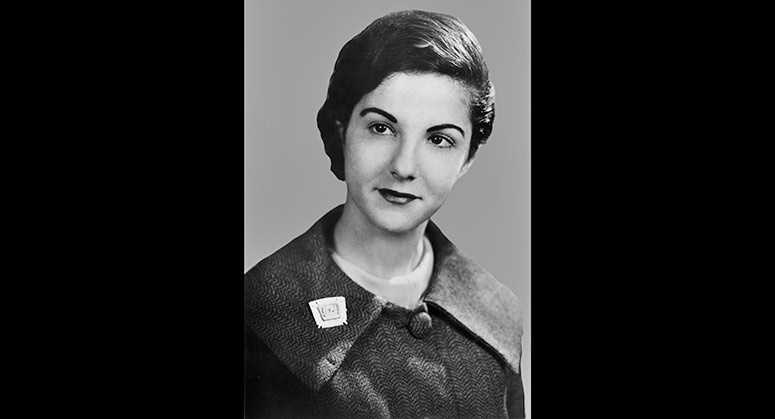The women of NYU Law have been making history since 1892. Facing modern challenges for women in the legal profession, they won’t stop now.
BY JILL FILIPOVIC (2008)
In 1973, when Carol Ziegler graduated from NYU School of Law, it was a banner year for women’s rights: That January, the US Supreme Court decided Roe v. Wade, the case legalizing abortion rights across the United States. That May, it ruled on Frontiero v. Richardson, holding unconstitutional the denial of benefits to military husbands that were available to military wives. A few months later, Billie Jean King beat Bobby Riggs in the Battle of the Sexes, in what was then the most-watched tennis match in history. The feminist movement seemed to be hitting its stride. But still, the US was a vastly unequal place. While she was in law school, “the law of married women was still in effect in many states,” says Ziegler, who helped write a part of the Roe brief while at NYU Law. “Women could not have a credit card without their husband’s written consent. Or own a business. Or own property. You couldn’t prosecute a rape in New York unless the testimony of a woman was corroborated by another witness. The level of injustice was so manifest it was low-hanging fruit.”
While the barriers women face—both in and outside the legal profession—may not be as blatant as they once were, women in the law continue to encounter complex obstacles to success. Today, 125 years after NYU Law graduated its first women, a look back to recent history contextualizes the Law School’s modern challenge: preparing women to be leaders in the profession while also making the structures of that profession more conducive to women’s advancement.
NYU Law student organizations including Law Women and the Women of Color Collective (WoCC), as well as the recently launched Women’s Leadership Network, offer resources for students and alumnae, including professional skill-sharing and mentorship. “The Law School has done an amazing job in reshaping, reforming, and making itself a better place,” Ziegler says.
LEADING CHANGE
NYU Law has long been a leader for women in a field that has often been hostile to their entry, opening its doors to women in 1890. In her 1991 NYU Law Review article, “Restless Women: The Pioneering Alumnae of New York University School of Law,” Phyllis Eckhaus (1985) describes the experiences and contributions of the Law School’s early women graduates. She notes that while uptown Dean Harlan Stone of Columbia Law School was promising to admit women “over my dead body,*” the women of the early twentieth century were graduating from NYU at a rate unparalleled by other law schools. Indeed, before American women had collectively earned the right to vote, the Law School had graduated more than 300 of them.
Still, of the 140 members of the class of 1916, just six were women. But the women of NYU Law made their mark, on the school and in the Greenwich Village neighborhood that housed it. As Eckhaus recounts, a few of these female grads—feminists, socialists, and radicals of various stripes—formed Heterodoxy, a Village social club for “women who did things and did them openly.” Elinor Byrns (1907) declared herself “a restless woman,” happy primarily in the company of the similarly agitated. Alumnae formed the Women Lawyers’ Club. Crystal Eastman (1907) worked with feminist leaders Alice Paul and Lucy Burns to establish the congressional committee that, after protests, riots, and nearly a quarter century of stagnation, eventually succeeded in getting women’s suffrage debated in Congress. NYU Law alumnae Byrns and Jessie Ashley (1902) worked with Elizabeth Cady Stanton’s daughter Harriot Stanton Blatch to organize the first march for women’s suffrage in 1910. As they paraded down Fifth Avenue, NYU Law student Inez Milholland (1912) led the way, sitting atop a white horse.
In the years that followed, Eckhaus observes, women led some of the most exciting movements of their time, including suffrage and birth control. NYU Law alumnae were often on the forefront of those issues, too: Jessie Ashley and Ida Rauh (1902) engaged in civil disobedience to promote contraception and women’s health, passing out pamphlets about birth control in Union Square in violation of their era’s repressive Comstock Law—the same law that put Planned Parenthood founder Margaret Sanger in jail.
A half century later, when the second wave of the feminist movement was in full swing, NYU Law women were again at the helm—in the Law School and outside of it. Janice Goodman (1971) co-founded the first Women and the Law committee at NYU in 1968 and pushed to open what is now the Root-Tilden-Kern Public Interest Scholarship to female law students; after graduating, she was a founding partner at the country’s first explicitly feminist law firm. Nancy Duff Campbell (1968) helped found the group that would go on to become the National Women’s Law Center. And NYU Law taught one of the country’s first-ever Women and the Law courses, which Ziegler and her friend and classmate Elizabeth Schneider (1973), now a professor at Brooklyn Law School, helped generate while they were both still students.
“We created this class,” Ziegler says, “and then we hired the teacher to teach it to us.” This, she adds, was a necessary counter to what the women of her era saw as a hypermasculine law school environment. Just 15 percent of Ziegler’s graduating class was female—but many of her male classmates thought there were enough women among their ranks. “We did a poll once and asked all of the students, ‘Approximately what percentage of women do you think there are in the class?’ and the male answer was over 50 percent. They perceived us as being the majority of the students of the Law School, but we were in fact a relatively small group,” Zeigler says.
“When the vibe from the front of the room got nasty, it was directed at anybody in the room, or grossly sexist in ways that it’s hard to believe are true,” she recalls. “There were two kinds of women who appeared in law school cases—there was the ditzy blonde and the irresponsible widow. I would walk out of the room.”
As more women entered law school and then began to teach, the pedagogy changed. The “firsts” began to mount: NYU Law counts as its alumnae the first female federal circuit judge, the first female state supreme court judge, and the first female chief judge of the New York State Court of Appeals.
In 1990, NYU Law’s biggest benefactor was a woman for the first time: alumna Filomen D’Agostino Greenberg (1920), who passed away in 2000 at 101. Students know her name through the eponymous residence hall, lounge, scholarship, and professorial chair and other faculty support that make up her legacy at the Law School.
NOT JUST THE NUMBERS
Now women are beginning to outnumber men in the Law School’s halls—in 2016, female students made up 55 percent of the 1L class. The same year, according to the American Bar Association (ABA), women’s enrollment outpaced that of men in law schools across the country for the first time in American history. But that statistic belies a more complicated reality: A 2016 report by Deborah Jones Merritt, of the Ohio State University Moritz College of Law, and Kyle McEntee, of Law School Transparency, found that women are disproportionately attending lower-ranked schools compared to men and as a result start their careers at a disadvantage, less likely to be hired for prestigious or well-paying jobs. Likewise, the top law schools in the US generally have more men than women on their student rolls, making NYU Law an outlier even among its peer institutions.
One downstream effect of this law school gender gap: equal representation in positions of power has been slow to come.
“The most ongoing challenge is to achieve parity,” Justice Doris Ling-Cohan (1979) says, “for people to be fully represented in all areas of the legal world, from judges to law clerks to firm partners, associates and the public interest community, executive directors, corporate boards in corporate America.”
While women make up nearly half (48.7 percent) of summer associates, as noted in a 2017 ABA report, they are just 18 percent of equity partners at US law firms and hold only a quarter of general counsel positions in Fortune 500 companies. Representation among law school leadership is only marginally better: fewer than one-third (31.1 percent) of law school deans are women. Women hold barely one in four judgeships. Female graduates are more likely to work in public interest, helping the destitute and vulnerable. That work is often undercompensated—a dynamic NYU Law tries to offset with its public interest loan forgiveness program—but across the legal field, male lawyers continue to outearn their female counterparts. According to the US Census Bureau, on average female lawyers working full time make 77 percent of what male lawyers are paid. And women find themselves at subtler disadvantages, too. For example, a recent study by Tonja Jacobi and Dylan Schweers of Northwestern Pritzker School of Law found that the female justices of the US Supreme Court are much more likely to be interrupted than the men on the court—and the interruptions come from their male colleagues, who are less keen to interrupt one another. For decades, female judges and lawyers have been noting, anecdotally, similar experiences.
“When I first graduated and I would go to court, nobody assumed I was a lawyer,” Ling-Cohan says. “Everybody thought I was a translator—anything but the lawyer. I wish that things were different, but...so many women come up to me with the same story.”
With women graduating from law school in greater numbers, and women helping each other navigate a traditionally male-dominated profession, more women than ever before are charting successful legal careers—even if their numbers aren’t yet on par with men’s. Ling-Cohan has seen these changes firsthand.
“When I ran for judge 20 years ago, people would say, ‘You don’t look like a judge,’” she says. “I didn’t look like a judge because it wasn’t what they were used to.”
Whether or not they faced the additional barriers attendant to racial bias, women who were pioneers in their professions say that this kind of representation is crucial to getting more women into fields in which they are underrepresented, including law.
Seeing someone who looks like oneself doing a particular job makes it seem possible—a dynamic Ziegler’s career illustrates. When she was considering what to do with her life, her working-class background meant she hadn’t met many lawyers, and certainly no female ones. After college, she took a job as a political speechwriter for Eugene Nickerson, a federal judge in Brooklyn, whose wife, Mary-Louise, had been in his class at Columbia Law. “He said to me, ‘Why aren’t you going to be a lawyer?’” Ziegler recalls. “And I said, ‘I don’t know. How do I do that?’ And I spoke to both of them, and here was a woman lawyer. A real woman lawyer. It was no longer abstract.”
That opened a door.
Now, the women of NYU Law are trying to open even more doors—or kick them down if they have to.
TRANSFORMATIONAL NETWORKS
When Ling-Cohan was at the Law School, she was one of just two Asian American women in her class. “As a woman of color at NYU, during that period of time, I felt very isolated,” she says. “There weren’t that many of us.” And in the early days of her judgeship, she didn’t see many people in the courtroom who looked like her, either. “I remember sitting in the large motion part with probably 100 to 200 attorneys, and I could count the women on one hand,” she says. “And I could count the people of color maybe on half a hand. [But recently] I did a trial where everybody involved was a person of color. I did a trial with two women, one on each side.”
Now she comes back to NYU Law with some regularity, especially to meet with the Women of Color Collective. “I think I would have benefited from having role models,” she says. “And WoCC has regular gatherings, they invite speakers, it’s really a community.”
Nonny Onyekweli (2016) was one of the many female law students who took advantage of what WoCC had to offer. One of the more helpful functions of WoCC, she says, is the group’s Sister Circles, which serve as honest, informal group discussions; at the beginning of the school year, WoCC invites female faculty of color to participate as well. “Our professors had different experiences when they were in law school,” Onyekweli says, and so it was helpful to share experiences and hear them talking about “ways they coped, the ways they found spaces to shine.” For Devika Balaram (2019), WoCC co-chair, “the day-to-day process of becoming a lawyer for a lot of minority groups can sometimes feel very alienating—even as it’s empowering to be learning the language of the law,” she says. And WoCC, she continues, “is a place that lets me feel that NYU supports all of me.”
Law Women, another affinity group on campus, plays a similar role, hosting events to discuss issues like sexual violence, working on professional development skills, and pairing 1Ls with 2Ls and 3Ls for mentorship. “When I was a 1L, it was just incredibly helpful to be able to talk to my 2L mentors,” says Chelsea Anelli (2018), 2016–17 Law Women co-chair. She cites help navigating how to find a job for 1L summer, how to go through Early Interview Week, what kinds of firms to look for, or how a lawyer dresses, “just these basic fundamental things that sometimes get overlooked when you’re starting out law school.... How do you put it all together?”
In 2017, Sheila Birnbaum (1965) and Jeannie Forrest, former vice dean for development and leadership initiatives, launched NYU Law’s Women’s Leadership Network (WLN) to connect students and alumnae for mentorship and sponsorship, help young lawyers navigate the early days of their careers, and create a leadership pipeline to get more female lawyers at the table in firms, companies, and nonprofits. Forrest debuted a series of podcasts featuring NYU Law alumnae sharing anecdotes and advice about what has allowed them to succeed, explaining how they have navigated professional challenges, and offering specific tips on how to be one’s own best advocate in the workplace. The network also works closely with student organizations, including the WoCC and Law Women, to support their programming and help connect them with alumnae and resources at the Law School so they can thrive.
“When I went to law school, it was very different than it is today,” Birnbaum says, because there were no female professors and so few female students. After graduating, Birnbaum and her fellow female lawyers worked to change New York’s rape laws, doing away with the corroboration requirement, and to push for no-fault divorce. The profession has changed, she says, but it’s still not where she wants it to be. “The challenges are very different now,” Birnbaum says. “But women still face challenges that men do not.” She states that the mission of the WLN, in part, is to help women overcome those challenges “so we can have a more equal playing field.”
To continue to do that work, the WLN is also evolving. In September, Professor Florencia Marotta-Wurgler (2001) will become its faculty director, and Julie Ehrlich (2008), an adjunct clinical professor and the assistant dean for strategic initiatives and chief of staff at NYU Law, will be the new executive director. Both women say they sought out their new roles because of personal and professional experience observing the impact of gender inequity and advocating for women’s rights. For Ehrlich, that came from her position just out of law school at the American Civil Liberties Union’s Women’s Rights Project, clerking in Brooklyn and on the Second Circuit, and working at a small firm where she routinely represented women who faced discrimination for their gender or for being pregnant. “I worked at great places,” Ehrlich says, “but by representing my clients and working for judges, I got to see firsthand some of the challenges women can face in the workplace.”
For Marotta-Wurgler, the passion for advancing women in the field came more circuitously, after a career that was spent largely in the company of men. Her academic work in law and economics, empirical study, and law and contracts puts her squarely in the faculties that are among the most male. Her mentors, professors, and colleagues, she says, were almost all men for most of her professional life, and she didn’t mind it—they were very good, and she didn’t feel like her own gender impeded her advancement. But then Yale Law School invited her to give a talk on one of her papers, and the audience that filled the room to hear her speak was almost all women.
“It felt different—it was so comfortable,” Marotta-Wurgler says. “It made me realize I hadn’t experienced anything different from the status quo.”
Among the priorities of the new leadership team is making sure there are more women in every room. The ultimate goal is to get the legal profession closer to gender parity and ensure that women are able to thrive. Of course, that takes individual skill-sharpening, but women’s rights advocates, female lawyers, and law students alike agree that women’s individual choices alone can’t be the whole of the road map to change. The plan, Ehrlich says, is “to work with our students, alumnae, and partners in the legal profession to think about how we might change structures to be more conducive to women’s leadership going forward. We want to acknowledge that the legal profession could be doing a lot better in terms of supporting the advancement of women’s careers, and to work with leaders in the industry to figure out how they can do that. At the same time, we want to work with our students to support them in figuring out how to succeed in the legal profession as it’s currently constructed.”
Marotta-Wurgler’s own experience moving from one of the only women in the room to a room full of women sparked her dedication to rethinking conventional solutions and getting creative about promoting women’s leadership. For her, the goal isn’t just numerical balance; it’s the promise of a richer life brimming with opportunity, whatever paths a woman chooses to walk down and wherever she chooses to follow a new one. “What if there’s something that could enable you to realize your potential more?” she asks. “What if making some changes increased opportunities for women and could increase their happiness?”
For many female lawyers, these unrealized opportunities and still-to-come changes are frustrating and sometimes even career-ending—women still drop out of the legal profession at much higher rates than men. But there is clearly growing attention to lingering problems: Women’s success in the law is increasingly the topic of professional affinity groups, panel discussions, and news stories. Now, 125 years after women first held an NYU Law degree, a historical perspective highlights not only the work to be done but also the progress that has been made. Ziegler graduated exactly 100 years after Bradwell v. Illinois, the US Supreme Court decision upholding a state rule barring women from practicing law, on the ground that “[t]he natural and proper timidity and delicacy which belongs to the female sex evidently unfits it for many of the occupations of civil life.”
“My mother was born in 1923,” Ziegler says, only three years after women gained the right to vote. “I added back and realized that many of these older male teachers at NYU [when I was a student] had grown up in a time when women didn’t vote. And it struck me, full in my face, how fast these changes have come.”
Sidebar: A Global Focus on the Law and Women’s Rights
NYU Law faculty, students, and alumni are working to promote women’s rights across the globe. Professor of Clinical Law Margaret Satterthwaite (1999) focuses her research on issues including the rights of migrant women, human rights in Haiti, and the use of social science in human rights fact-finding. Students in her Global Justice Clinic and other mentees such as Beatrice Lindstrom (2010) have gone on to do significant work in the field of international human rights.
Current students often make use of the Law School’s summer grants to complete international internships focused on women’s rights. This summer, Ariel Geist (2019) traveled to Kuala Lumpur, Malaysia, to work at the International Women’s Rights Action Watch Asia Pacific, an NGO devoted to implementing the human rights of women through the lens of the Convention on the Elimination of All Forms of Discrimination Against Women. Stephanie Sebastian (2019) spent her summer in Johannesburg, South Africa, at the Initiative for Strategic Litigation in Africa, an initiative that promotes sexual rights and women’s human rights throughout the continent.
Alumnae such as Vrinda Grover (LLM 2006) and Mallika Dutt (1989) have built careers working toward equality for women. In 2013, Time named Grover to its annual list of the 100 most influential people in the world for her work, including helping to draft the Criminal Law Amendmentto India’s law against sexual assault. Dutt is the founder and former president and CEO of Breakthrough, an organization that uses technology and pop culture to promote human rights in the US and India and works to prevent violence against women by changing cultures that enable it. In accepting a 2016 Skoll Award for Social Entrepreneurship, Dutt said: “I created Breakthrough to build a culture of human rights where the norms of equality, justice, and, indeed, fierce compassion live in the smallest corners of the world.”
Jill Filipovic (2008) is the author of The H-Spot: The Feminist Pursuit of Happiness. She is a contributing opinion writer to the New York Times and a weekly columnist for CNN.com and Cosmopolitan.com. Her reporting on law, politics, and international affairs has appeared in the Washington Post, Time, Foreign Policy, the Guardian, and other publications.
* Karen Berger Morello, “N.Y. Court Once Denied a Woman’s Bar Admission,” New York Law Journal, May 1, 1986, 40.
Milholland photo: Library of Congress/Harris & Ewing
This piece has been edited as the original version omitted citing the 1991 NYU Law Review article, “Restless Women: The Pioneering Alumnae of New York University School of Law,” by Phyllis Eckhaus (1985). Material from Eckhaus’s article contributed significantly to our story, and NYU Law Magazine regrets this omission.
Reposted September 23, 2017
